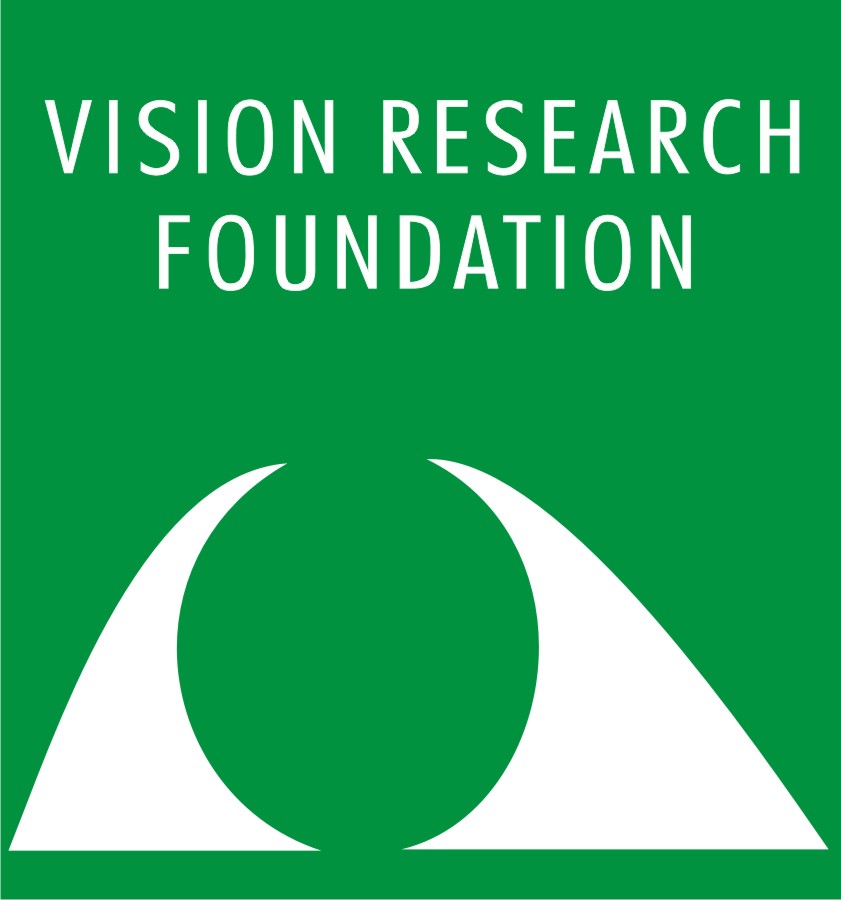Retinal Immunology
The immune response at the retina is unique. While much has been learned from extrapolating the knowledge gained from studying immunity of central nervous tissue, there are cells and interactions which occur only at the retina. We use multiple molecular and imaging tools to assess and dissect the major contributors to retinal immunology. Inherently, the retinal immune response is geared to promote an anti-inflammatory milieu. Muller glia, the predominant glial cell at the retina, are critical in the innate immune response. Extensive molecular studies from our group shows their role in regulating immune response only when these cells are activated; when retinal tissue is under challenge from infectious conditions, such as TB and HIV. To this end, we have worked extensively with the endocannabinoid system at the retina. Like the CNS, the retina is peculiarly sensitive to equilibrating immunity and tolerance, as a measure of immune privilege. In this context components of the blood retinal barrier and secreted factors from retinal cells become important. Neuroimmune communications therefore represent a new avenue in controlling retinal immune homeostasis. Applying molecular and cellular techniques we investigate, etiology and pathology of different infectious eye disorders with an immune arm, including where peripheral immune system play roles in exacerbating disease progression. In collaboration with theoretical scientists, I also work with the C.elegans nematode. This model system allows functional dissection at cellular level. Exhaustive developmental and neuronal connectivity studies in this nematode also allows constructing a dynamical neural network simulator for the entire C. elegans somatic nervous system.
Our lab began its activities at Vision Research Foundation in 2007. We are interested in studying the different structural components of retinal immunology and their roles in both innate and adaptive immunity in the context of immune privilege. Our work is important in finding biomarkers and deciding monitoring policies inpatients with infectious diseases such as HIV.
-
The Retina: a model system for understanding neuroprotection by glia Principal Research Objectives
- Studying effects of HIV-1 soluble proteins on retinal degeneration
- Investigating endocannabinoid involvement during retinal inflammation
- Mueller cells and microglia in retinal neuroprotection
- Adaptive immune components in the retina and its regulation
- Immuno-senescence
- Studying blood-retinal barrier changes on exposure to HIV/TB proteins
- Studying microRNA profile in retinitis patients- implications as biomarkers
- Investigating Endocannabinoid levels in retinitis
-
The Retina: a system for assessing neuro-immune interactions
- Studying interactions between peripheral immune system and retinal glial cells
- Immune senescence in TB uveitis
- Studying transcriptional modulation of immune genes at the retina
-
Caenorhabditiselegans: A model system for understanding neuron-glia interactions at the level of an entire nervous system
Principal Research Objectives
- Development of C.elegansstrains with specific neurons and their associated glia-like cells, labelled for visualisation and measurement of activity-induced calcium dynamics.
- Development of nematode strains labelled to identify specific glia for development studies.
- Construct a dynamical neural network simulator for the entire C. elegans somatic nervous system using physiologically realistic single-compartment models of individual neurons.
-
Investigating mutant strains specific for neuronal genes for studying neuron-glia associations during development of the C.elegansnervous system.
-
Investigating mutant strains specific for innate immune response for studying neurodegeneration
-
Theoretical investigation of how adaptive learning occurs in C.elegans.
Techniques used in the laboratory
- Live imaging with Microscopy
- Priamry Cell culture
- Cell sorting: magnetic beads, Pluriselect
- Computational analysis of microassays
- Transmigration Assays
- Transendothelial resistance assays
- Molecular techniques
Selected Publications and Books
-
Nivedita Chatterjee “Glia in the Retina: Pluri-Functional Mediators in Diverse Ocular Disorders”, Inflammation: the Common Link in Brain Pathologies, 978-981-10-1710-0, 393644_1_En, (11), 2016
-
V. Gopakumar, Nivedita Chatterjee, SowmyaParameswaran, Subramanian Nirmala , Subramanian Krishnakumar, “In vitro transdifferentiation of human skin keratinocytes to cornealepithelial cells” Cytotherapy, 2016; 18: 673–685
-
Gopinath K. Chatterjee N., “Differential immune mechanism of HIV1 Tat variants and its regulation by AEA” (2015) 5:09887 Nature Scientific Reports
-
Gopinath K. Chatterjee N. “Anandamide rescues retinal barrier properties in Müller glia through nitric oxide regulation.” (2015); 284:536-45 Neuroscience.
-
Beta M, Khetan V, Chatterjee N, Suganeswari G, Rishi P, Biswas J, Krishnakumar S. (2014) EpCAM knockdown alters microRNA expression in retinoblastoma-functional implication of EpCAM regulated miRNA in tumor progression.12;9(12), PLoS One.
-
Chatterjee N. “Glial cells in retinal disorders: an overview.” (2014) February XXXII (1) Sci J Med & Vis Res Foun
-
Gopinath K. Chatterjee N., “HIV-1 Tat-mediated inflammation in the retina can be regulated by endocannabinoids.” (2014) 59C:10-23 Molecular and Cellular Neuroscience
-
RavikanthDanda, Gopinath Krishnan, KalaivaniGanapathy, Uma Maheswari Krishnan, KhetanVikas, SailajaElchuri,Nivedita Chatterjee, Subramanian Krishnakumar (2013), “Targeted Expression of Suicide Gene by Tissue-specific Promoter and microRNA Regulation for Cancer Gene Therapy”. 2013 DOI: 10.1371/journal.pone.0083398 Plos One.
-
Gopinath K., Chatterjee N. (2013) “Detergent resistant membrane fractions are involved in calcium signaling in Muller glial cells of retina.” The International Journal of Biochemistry and Cell Biology 45(8):1758-66
-
Gopinath K., Chatterjee N. (2012) "Endocannabinoids alleviate pro-inflammatory conditions by modulating innate immune response in Muller glia during inflammation”. Glia, 60(11): pp1629-45. ISSN 1098-1136.
-
Jasty S., Nagarajan A., Srinivasan P., Chatterjee N., Pasricha G., Krishnakumar S.(2012) Gene expression profiles and Retinal potential of stem/progenitor cells derived from human iris and ciliary pigment epithelium”. Stem Cell Reviews and Reports 8(4):1163-77. ISSN: 1558-6804.
-
Chatterjee N., Callen S., Seigel G., Buch S.J. (2011) “HIV-1 Tat mediated neurotoxicity in retinal cells.” Journal of Neuroimmune Pharmacology 6(3), pp399-408 ISSN: 1557-1904.
-
Pan R.K., Chatterjee N., Sinha S. (2010) “Mesoscopic organization reveals the constraints governing C. elegans nervous system.” Plos One. 5(2):e9240. ISSN • 1932-6203.
-
Chatterjee N., Stegmüller J.,Schätzle P.,Karram K., Koroll M., Werner H.B., Nave K.A, Trotter J. (2008) “Interaction of Syntenin-1 and the NG2 proteoglycan in migratory oligodendrocyte precursor cells.” J. Biol. Chem. 283:13, pp8310-8317. ISSN 1083-351X.
-
Chatterjee.N., Sinha S. (2007) Understanding the Mind of a Worm: Hierarchical network structure underlying nervous system function in C. elegans.”Progress in Brain Research 168, pp145-153. ISBN 978-0-444-59544-7.
-
Karram K., Chatterjee N., Trotter J. (2005) “NG2-expressing cells in the nervous system: role of the proteoglycan in migration and glial-neuron interaction.” Journal of Anatomy207, pp 735-744. ISSN 1469-7580.
-
Sinha S., Jesan T., Chatterjee N. (2009) “Systems Biology: From the Cell to the Brain.” Current Trends in Science, Platinum Jubilee Special (Ed. N Mukunda). Indian Academy of Sciences, Bangalore
2017
NIH Office of AIDS Research Scholarship
2015
Australia Award
2009 - 2010
ICMR International Fellowship for Young Biomedical Scientist
2007
Visiting Fellow, National Centre for Biological Sciences, Bangalore
2005
[Lab] Initiative Award, SANOFI-AVENTIS
1999 - 2001
Research Fellow, Indian Institute of Science (IISc.)
1999
CSIR-UGC Research Fellow (Council of Scientific and Industrial Research and University Grant Commission National Eligibility Test

Durairaj Duraikannu

Kamini Khatak

Durairaj Duraikannu

Kamini Khatak
Dr Nivedita Chatterjee, PhD
Larsen & Toubro of Ocular Pathology Department
Vision Research Foundation,
41/18 College Road, Nungambakkam
Chennai – 600 006.
Ph: +91-(044) 28271616 Extn:1325
Email: drnc@snmail.org







